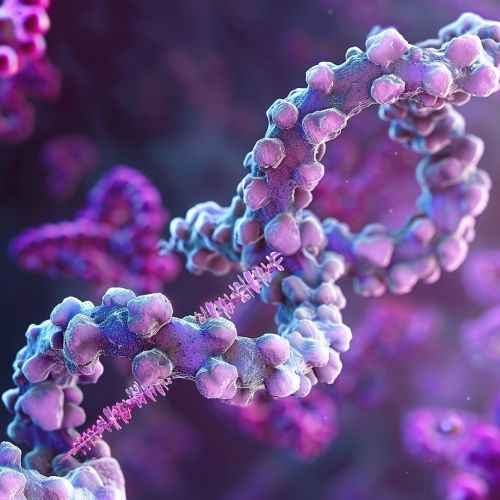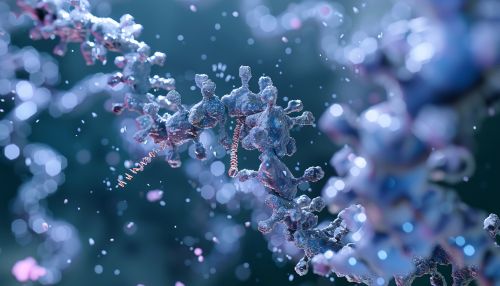Ribosomes
Overview
Ribosomes are complex molecular machines found within all living cells that serve as the site of biological protein synthesis (translation). They link amino acids together in the order specified by messenger RNA (mRNA) molecules. Ribosomes consist of two major components: the small ribosomal subunits, which read the mRNA, and the large subunits, which join amino acids to form a polypeptide chain. Each subunit comprises one or more rRNA molecules and a variety of ribosomal proteins (r-proteins).


Structure
Ribosomes are generally composed of two subunits: a large subunit and a small subunit. Both of these subunits are themselves complex structures made up of both rRNA and r-proteins. The large subunit is responsible for the peptidyl transfer reaction, whereas the small subunit is responsible for matching the codons in the mRNA with the correct amino acid.
Small Subunit
The small subunit of the ribosome, often denoted as 30S in prokaryotes and 40S in eukaryotes, is the site where the mRNA binds and is 'read' during translation. It contains a decoding center, where the mRNA codon pairs with the tRNA anticodon.
Large Subunit
The large subunit, often denoted as 50S in prokaryotes and 60S in eukaryotes, is where peptide bond formation takes place. It contains a peptidyl transferase center, where amino acids are linked together to form a polypeptide chain.
Function
The primary function of ribosomes is to synthesize proteins, a process known as translation. This process involves the decoding of mRNA into a polypeptide chain (primary structure of proteins), which will later fold into an active protein.
Initiation
Translation initiation in ribosomes begins with the binding of a tRNA to the small ribosomal subunit. Once the mRNA and tRNA are bound to the small subunit, the large subunit can attach, creating a functional ribosome.
Elongation
During the elongation phase of protein synthesis, amino acids are added one by one, translated into polypeptidyl chains. The energy for this process comes from GTP, a molecule similar to ATP.
Termination
Once a stop codon is reached on the mRNA, the protein synthesis is terminated. The newly synthesized polypeptide is then released from the ribosome, and the ribosome dissociates into its large and small subunits.
Biogenesis
Ribosome biogenesis involves the production of the ribosomal subunits, a process that is complex and energetically demanding. In eukaryotes, this process takes place both in the cell cytoplasm and in the nucleolus.
Evolution
The ribosome is an ancient molecular machine, and its core structure has changed little over evolutionary time. The study of ribosomal RNA has been a key method in reconstructing the phylogenetic tree of life.
Medical Significance
Many antibiotics function by inhibiting the bacterial ribosome. Research into ribosome function can also provide insights into the molecular mechanisms of genetic diseases.
